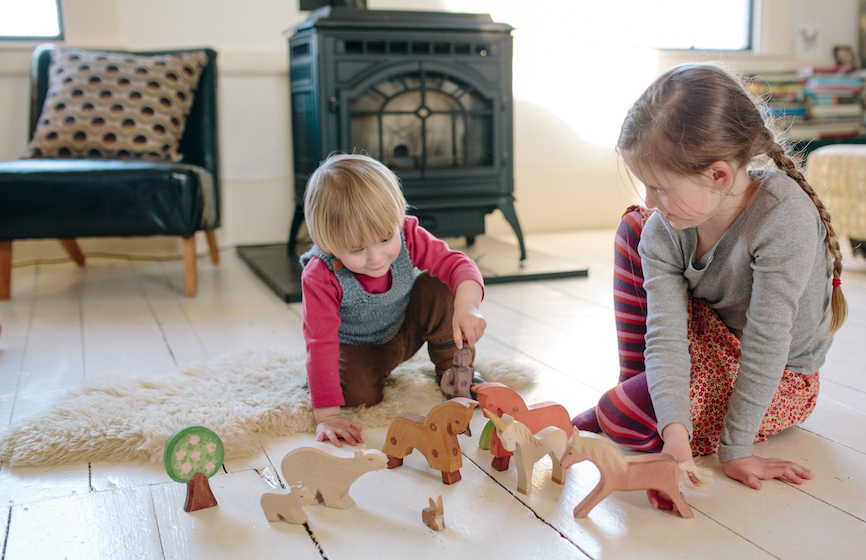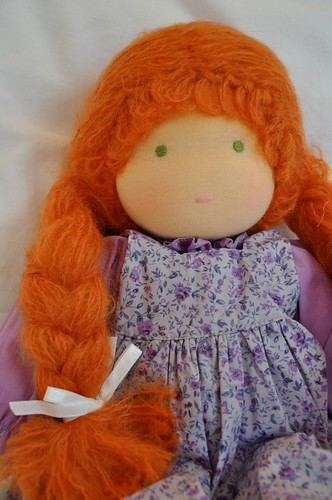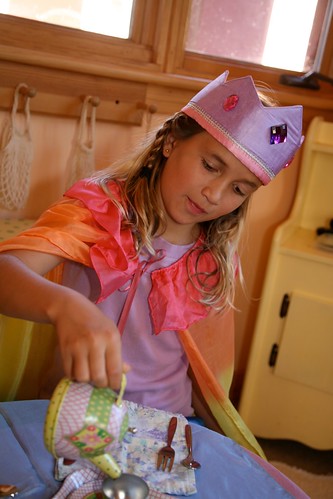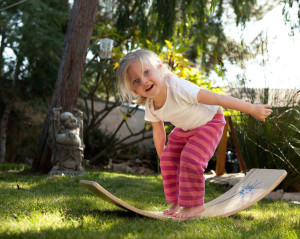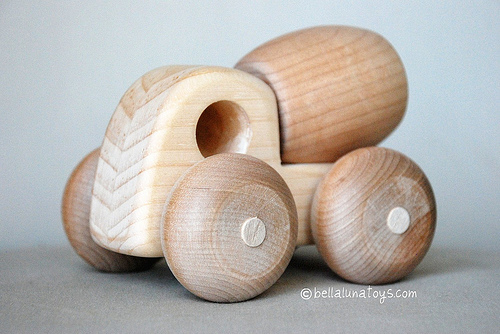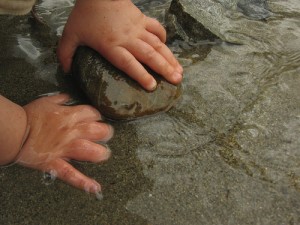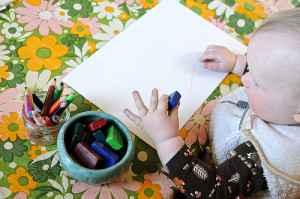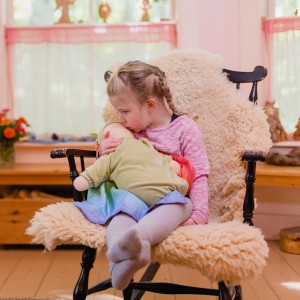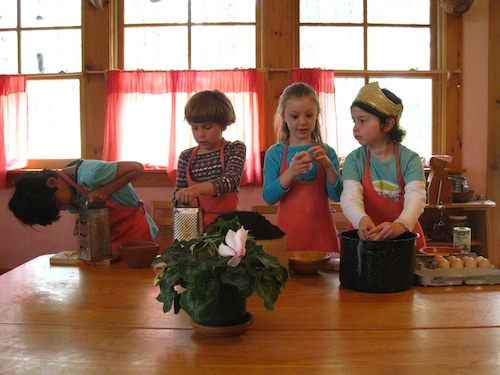When I am asked by a new acquaintance what I do for a living, I explain that I am a former Waldorf teacher and that sell and share my love of Waldorf toys. I am frequently met with a blank stare, in which case I know that more explanation is needed.
I will go on to explain that the kinds of toys we carry are wooden, eco-friendly and organic toys. You know, “green toys.” This gives most people a better idea, but there is so much more to it than that. Beyond simply being natural toys, what exactly makes a toy a “Waldorf toy?”
Nourishing to the Senses
Since families have become more eco-conscious in recent years, toymakers are producing many more eco-friendly and natural toys to meet the increasing demand. But Waldorf schools, which originated in the 1920’s, have always provided children with toys made of natural materials, such as wood, silk, wool and cotton.
Yes, these kinds of toys are good for the environment, but most importantly, they are good for children! I’ve written previously here about the importance of sensory experience in early childhood, so one important hallmark of a “Waldorf toy” is that it be nourishing to a young child’s senses.
Imagine the sensory experience of a toddler cuddling a rigid, hard plastic doll with synthetic hair, and then cuddling a Waldorf doll stuffed with wool, covered in cotton with a head of soft mohair. Not only is the Waldorf doll more aesthetically pleasing, but its softness and warmth will having a calming and soothing effect on a young child.
Beautiful to Behold
Waldorf toys should also be beautiful to behold, because sight is as important as touch. We want to nurture children in a beautiful environment and their playthings should be beautiful as well. By surrounding children with beauty, we are not only contributing to their sense of wellbeing (or “sense of life,” as Rudolf Steiner referred to it), but also developing their aesthetic awareness and appreciation.
Toys that are made from natural materials, with rich, natural colors, and that are lovingly handcrafted are inviting, and contribute to a child’s “sense of life.” A child is much more likely to feel reverence for a beautiful handcrafted toy and care for it accordingly than he is for a mass-produced plastic toy. As Plato so eloquently recognized, “the most effective kind of education is that a child should play amongst lovely things.”
Inspiring the Imagination
Rudolf Steiner, the founder of Waldorf education, suggested that children’s playthings should be largely unformed in order to stimulate a child’s imagination. What does this mean? Waldorf toys are often simple, without a lot of detail.
Waldorf teachers believe that toys should be simple and open-ended. Baskets of tree branches (like our Tree Blocks), play silks, stones, pinecones and shells all can be transformed into a myriad of objects. During a typical morning in a Waldorf kindergarten, one would likely see shells become money; wooden blocks become food; a small piece of tree branch become a telephone; silks become skirts and veils; and so on. By giving children objects that are not highly formed and detailed, they can easily become more than one thing, and give children’s imaginations free reign.
If you are familiar with a Waldorf doll, you no doubt have noticed that such dolls have minimal facial features, and sometimes no faces at all! As is the case with most aspects of Waldorf education, the reason is not arbitrary. Waldorf dolls have minimal or no faces in order to encourage the imagination of the young child—to cultivate her “inner picturing” abilities.
Again, think of a hard, formed plastic doll, with a highly detailed face, and a fixed, frozen smile. If a young child is playing “house” and caring for this baby, it is hard to imagine this baby to be sad or crying. Children want to imitate real life. Real babies smile and laugh, but they also look sad or cry when they are hungry or need changing. If a doll has just two eyes, and a suggestion of a mouth, the child is more easily able to imagine this baby expressing a range of emotions, living richly in her imaginative life. For the same reason, Waldorf puppets have only the barest suggestion of faces.
Imitation: Play is a Child’s Work and Toys Are Her Tools
Children naturally want to imitate adults and their daily activities. As Waldorf teachers, we strive to be adults “worthy of imitation” and bring consciousness to our gestures as we engage in the daily tasks of living, such as cooking and cleaning in the classroom. Knowing that children will imitate our activities we attempt to work in an unhurried and careful way.
Bringing consciousness to one’s daily activities at home, and providing children with child-sized versions of household items such as a play kitchen, wooden play dishes, and tools such as a broom, or dust pan and brush will allow children to fully engage in their imaginative imitation of daily life, and build real life skills as well.
As I’ve tried to stress to parents over the years, choosing toys is not about “good toys” vs. “bad toys.” Rather, it’s about bringing new consciousness to selecting children’s playthings. Is it beautiful? Does it feel good? Does it leave room for the imagination? Will it inspire imitative play? If you can answer yes to these questions, you will be providing your child with all the tools needed for years of healthy play!
Have a question about Waldorf toys? What are your favorites? In the coming months, Bella Luna Toys will be greatly expanding its inventory, and I’d love to hear your ideas!

